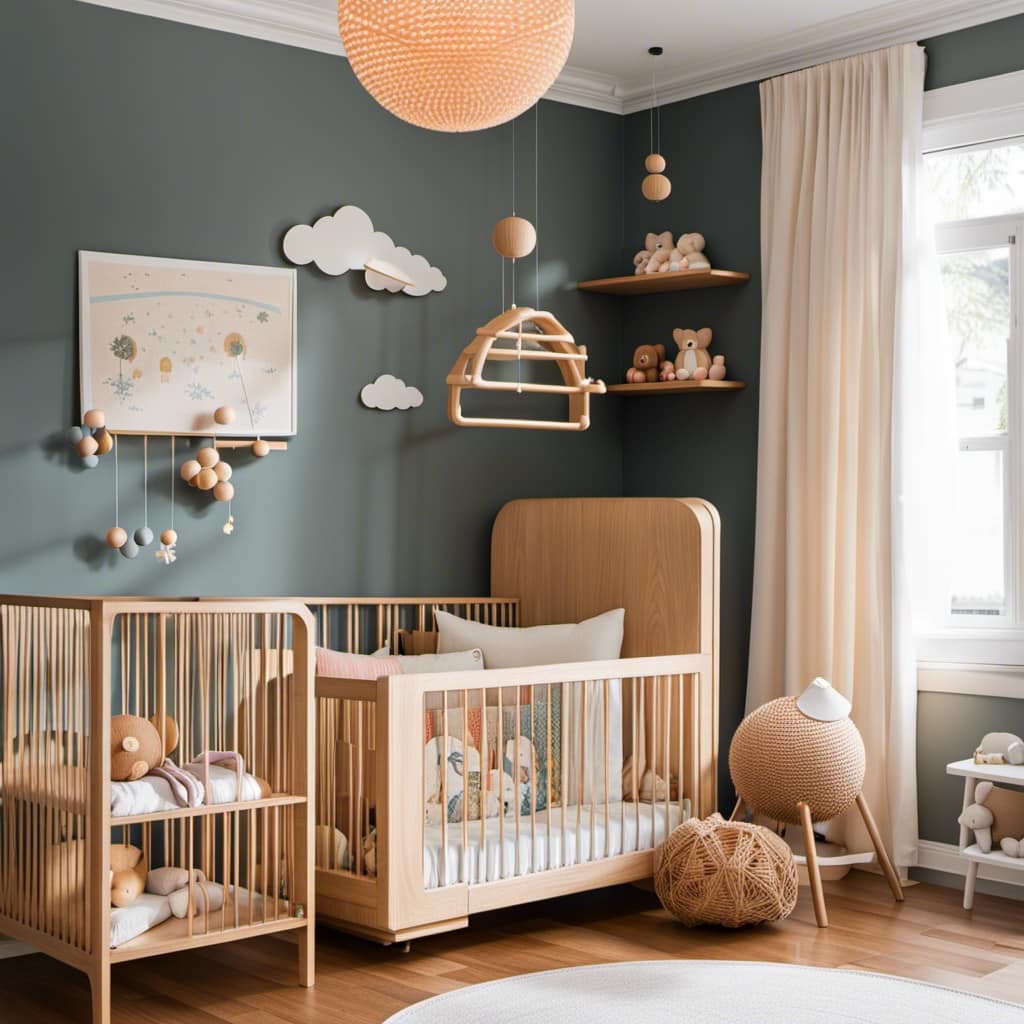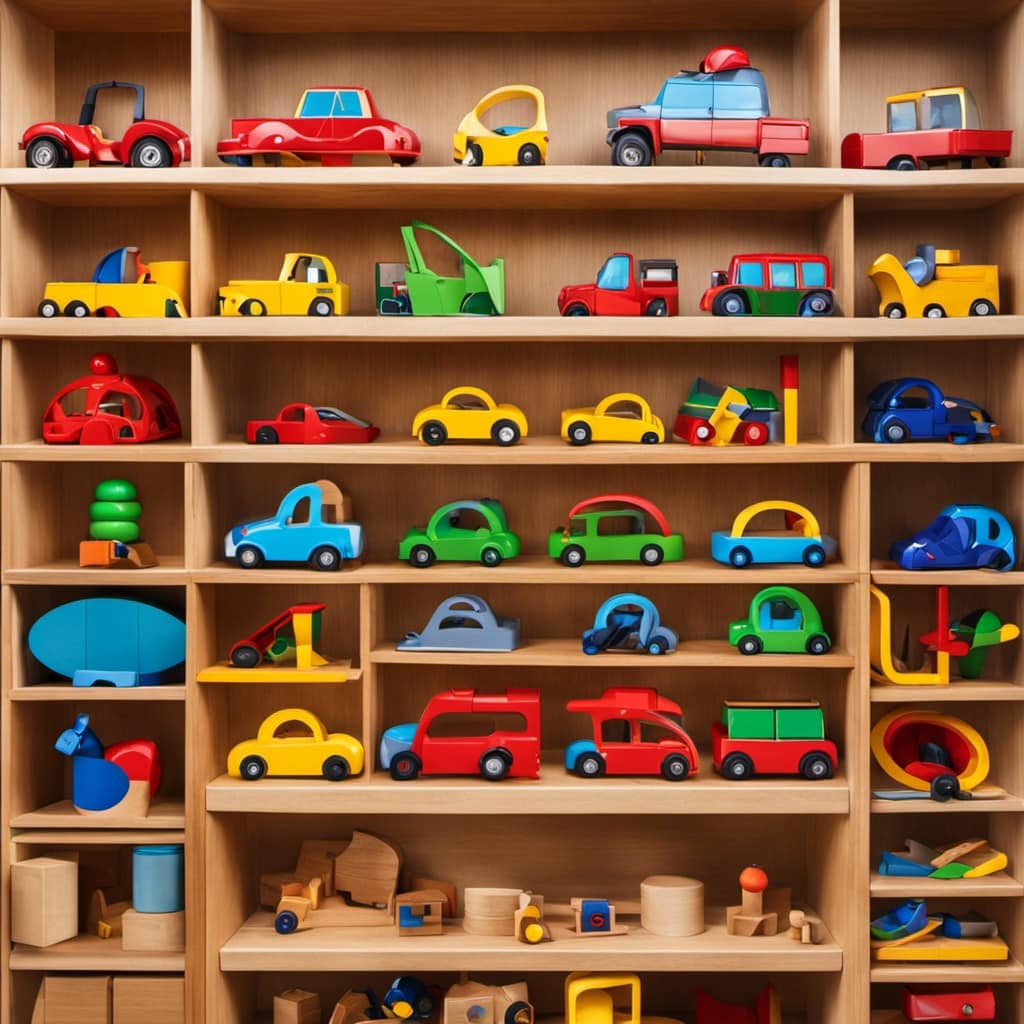As parents and guardians, our common objective is to guarantee the welfare of our children in all aspects of their lives. This is why we are committed to helping you discover alternatives for non-toxic wooden toys for your child’s playtime.
In this article, we’ll uncover the types of safe wooden materials available, discuss the benefits of using them, and provide tips on choosing the right wood for Montessori toys.
Let’s ensure the safety and well-being of our children together.
Key Takeaways
- Maple, beech, and birch are safe and sustainable wood options for playtime toys.
- Using safe wooden materials promotes child safety and protects the environment.
- Choosing the right wood for Montessori toys ensures a safe play environment and contributes to forest conservation.
- It is important to avoid toxic wood options like pressure-treated wood and plywood with formaldehyde-based adhesives, and instead opt for safer alternatives like natural rubber, organic cotton, and recycled plastic.
Types of Non-Toxic Wood
We have found that among the various types of non-toxic wood, some of the most commonly used in playtime toys are maple, beech, and birch. These wood options aren’t only safe for children but also sustainable, making them an excellent choice for eco-conscious individuals.
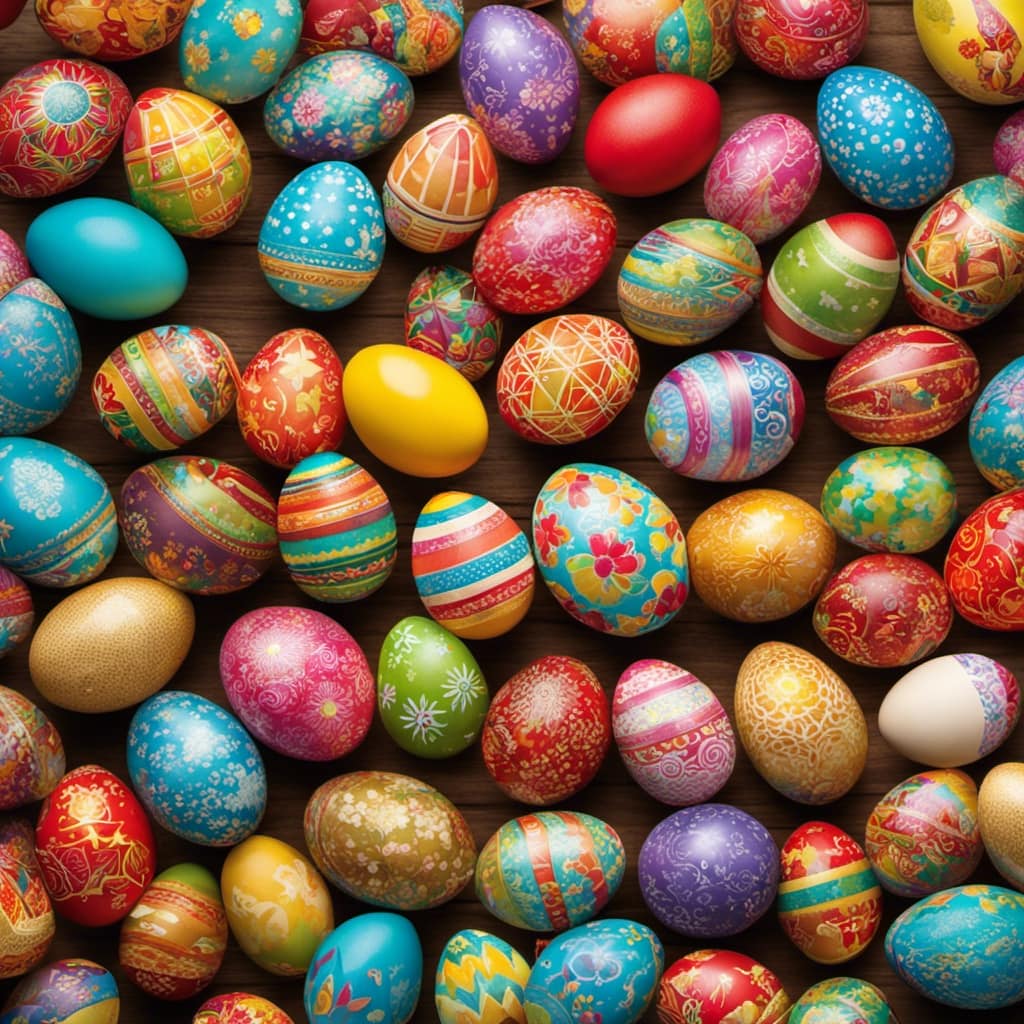
Maple, beech, and birch are known for their durability and strength, making them ideal for withstanding the wear and tear of playtime. Additionally, these woods can be finished with natural wood finishes, further enhancing their safety and appeal. Natural wood finishes, such as beeswax or linseed oil, are non-toxic and provide a smooth and tactile surface for children to explore.
By choosing sustainable wood options and using natural wood finishes, we can ensure that playtime toys are safe, environmentally friendly, and enjoyable for children.
Transitioning into the subsequent section, let’s now explore the benefits of using these safe wooden materials.
Benefits of Using Safe Wooden Materials
Using safe wooden materials in playtime toys offers numerous benefits for both children and the environment. Not only does it promote the health and safety of children, but it also helps to protect our planet. By using sustainable wood, we ensure that the resources used for making these toys are responsibly harvested, reducing deforestation and environmental degradation. Additionally, the health effects of toxic wood exposure are minimized when safe wooden materials are used. Toxic wood can release harmful chemicals that can be ingested or inhaled by children during playtime, leading to potential health issues. By opting for non-toxic wood choices, we can provide a safer play environment for children, free from harmful substances. Let’s take a look at the table below to see the specific benefits of using safe wooden materials:

| Benefits of Using Safe Wooden Materials | |||
|---|---|---|---|
| Promotes Child Safety | Protects the Environment | Reduces Deforestation | Minimizes Health Risks |
| ———————– | ———————- | ———————— | ————————– |
| Safe for Children to Play With | Sustainable and Renewable Resource | Preserves Natural Habitats | Eliminates Exposure to Harmful Chemicals |
| ———————– | ———————- | ———————— | ————————– |
Choosing the Right Wood for Montessori Toys
When selecting wood for Montessori toys, it’s important to consider the suitability of the chosen material. To ensure the safety of children, it’s crucial to opt for wood that meets wooden toy safety certifications. These certifications guarantee that the wood used in the toys is free from harmful chemicals and toxins, ensuring a safe play environment.
Additionally, choosing sustainable wood options for toys is essential for preserving the environment. Sustainable wood comes from responsibly managed forests, ensuring the long-term availability of wood resources. By opting for sustainable wood, we can contribute to the conservation of forests and wildlife habitats.
Furthermore, sustainable wood options often have a lower carbon footprint, making them a more environmentally friendly choice.
Common Toxic Wood to Avoid in Playtime Toys
To ensure the safety of children and continue our exploration of non-toxic wood choices in playtime toys, it’s important to identify common toxic wood that should be avoided.
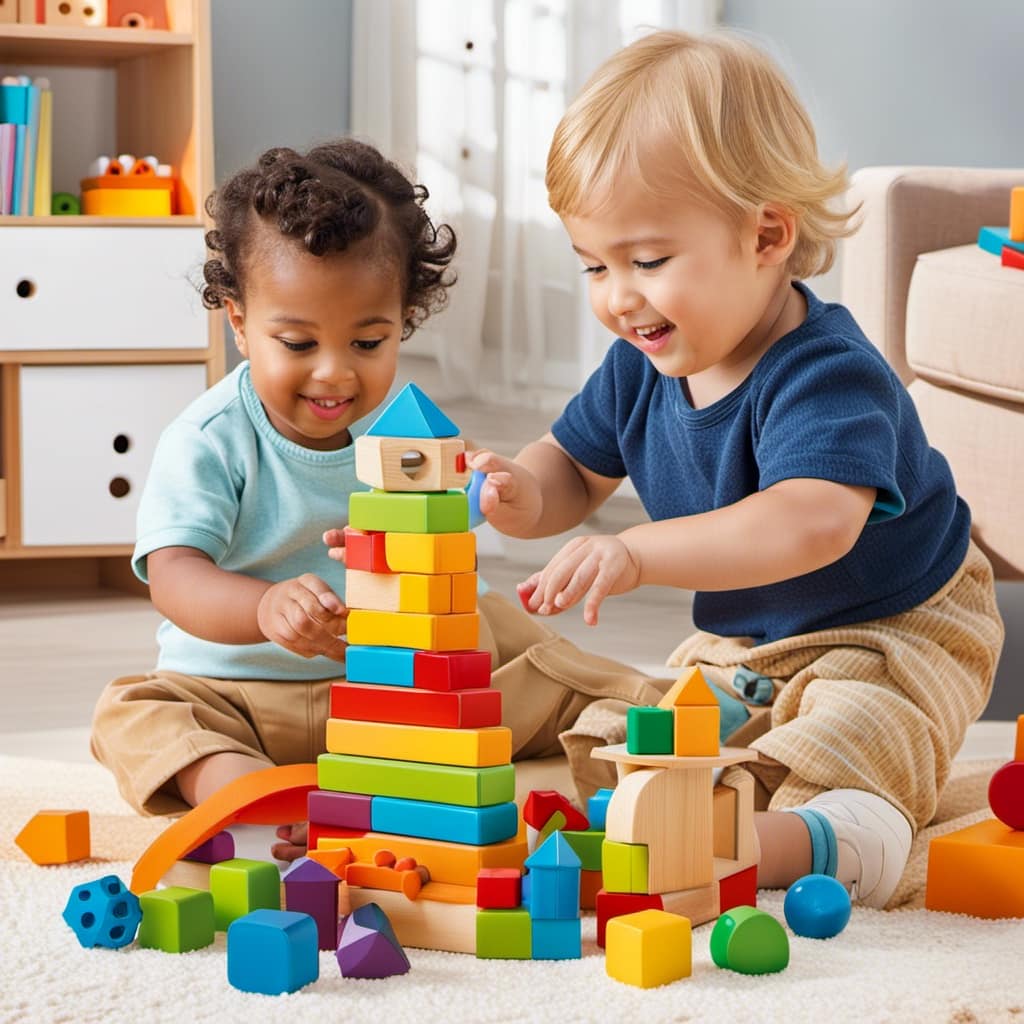
Some examples of toxic wood include pressure-treated wood, which contains harmful chemicals like arsenic and copper, and plywood made with formaldehyde-based adhesives. These toxic substances can have detrimental effects on child development, including respiratory issues, allergies, and even increased risk of cancer.
Fortunately, there are alternatives to wood in playtime toys that are safer for children. Materials such as natural rubber, organic cotton, and even recycled plastic can be used to create non-toxic and eco-friendly toys.
How to Ensure the Safety of Wooden Toys
We can ensure the safety of wooden toys by carefully selecting non-toxic wood options. When purchasing wooden toys, it’s important to consider the following factors:
-
Testing standards for non-toxic wood in toys: Look for toys that meet safety regulations and have been tested for harmful substances. Check if the toy has been certified by organizations like the American Society for Testing and Materials (ASTM) or the European Toy Safety Standard (EN71).
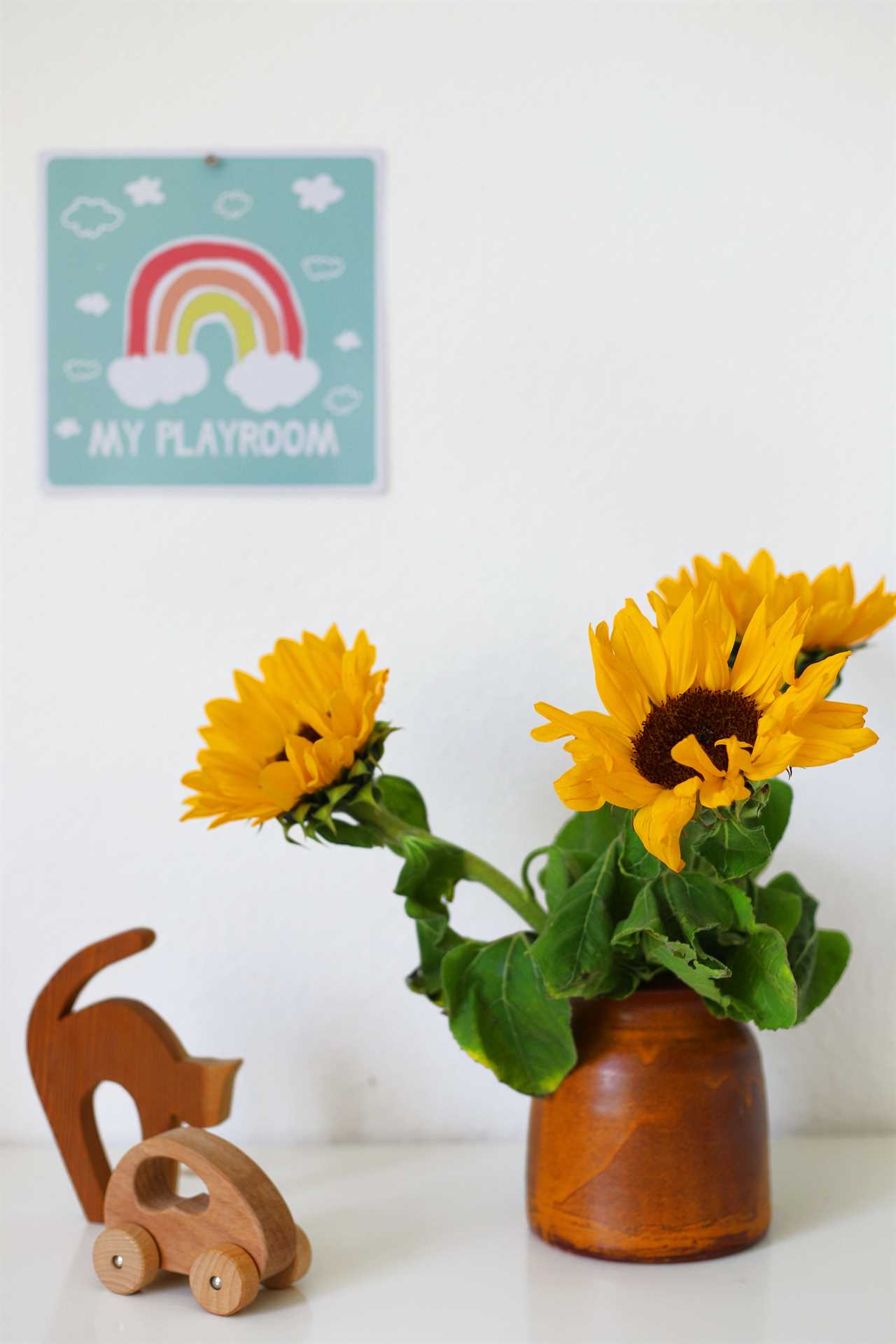
-
Eco-friendly manufacturing processes for wooden toys: Choose toys that have been manufactured using sustainable and environmentally friendly practices. Look for toys made from responsibly sourced wood and ones that use non-toxic paints or finishes.
-
Quality and durability: Opt for toys that are well-made and sturdy. Check for any loose parts or sharp edges that could potentially harm a child.
-
Age appropriateness: Consider the age recommendations provided by the manufacturer. Choose toys that are suitable for your child’s developmental stage to ensure their safety and enjoyment.
Frequently Asked Questions
Is It Possible for Wood to Be Non-Toxic?
Yes, wood can be non-toxic. When considering playtime toys, it’s important to choose natural wood alternatives that are free from harmful substances. These options prioritize safety and allow for enjoyable and worry-free play.
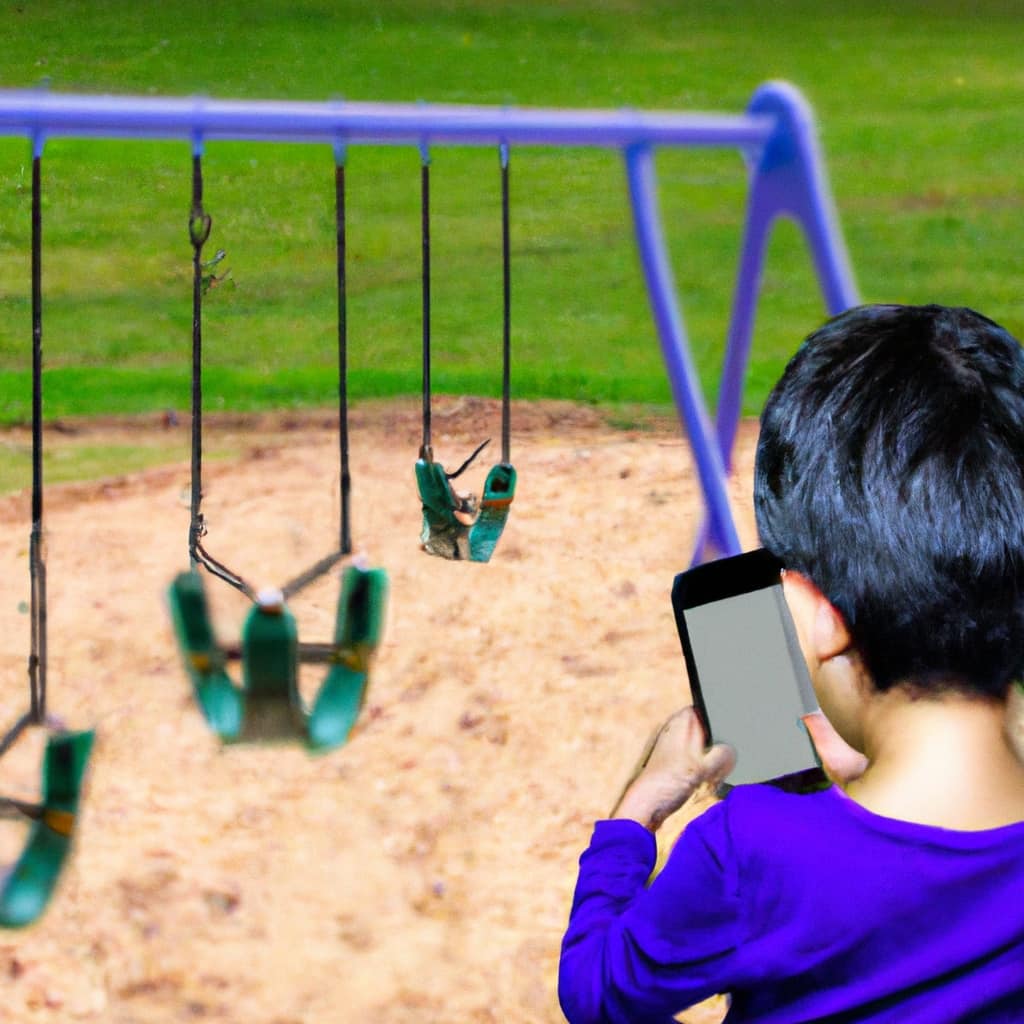
Can Non-Toxic Wood Be Harmful to Children in Any Way?
Non-toxic wood offers numerous benefits for children’s toys, promoting safety and health. However, we must be cautious as certain types of non-toxic wood can still pose risks if not properly treated or maintained.
Are There Any Specific Certifications to Look for When Buying Non-Toxic Wooden Toys?
There are specific certifications to look for when buying non-toxic wooden toys. These certifications ensure that the toys meet safety standards and are free from harmful substances. It’s important to check for these certifications to ensure the safety of children.
What Are Some Common Signs of Toxic Wood That Parents Should Be Aware Of?
Common signs of toxic wood in toys include strong chemical smells, discoloration, and rough texture. It is important to choose non-toxic wood for children’s toys to ensure their safety and well-being.
Are There Any Specific Guidelines or Regulations in Place to Ensure the Safety of Wooden Toys?
Ensuring the safety of wooden toys is crucial, and there are regulations in place to accomplish this. By prioritizing non-toxic materials, parents can provide their children with the benefits of wooden toys over plastic alternatives.
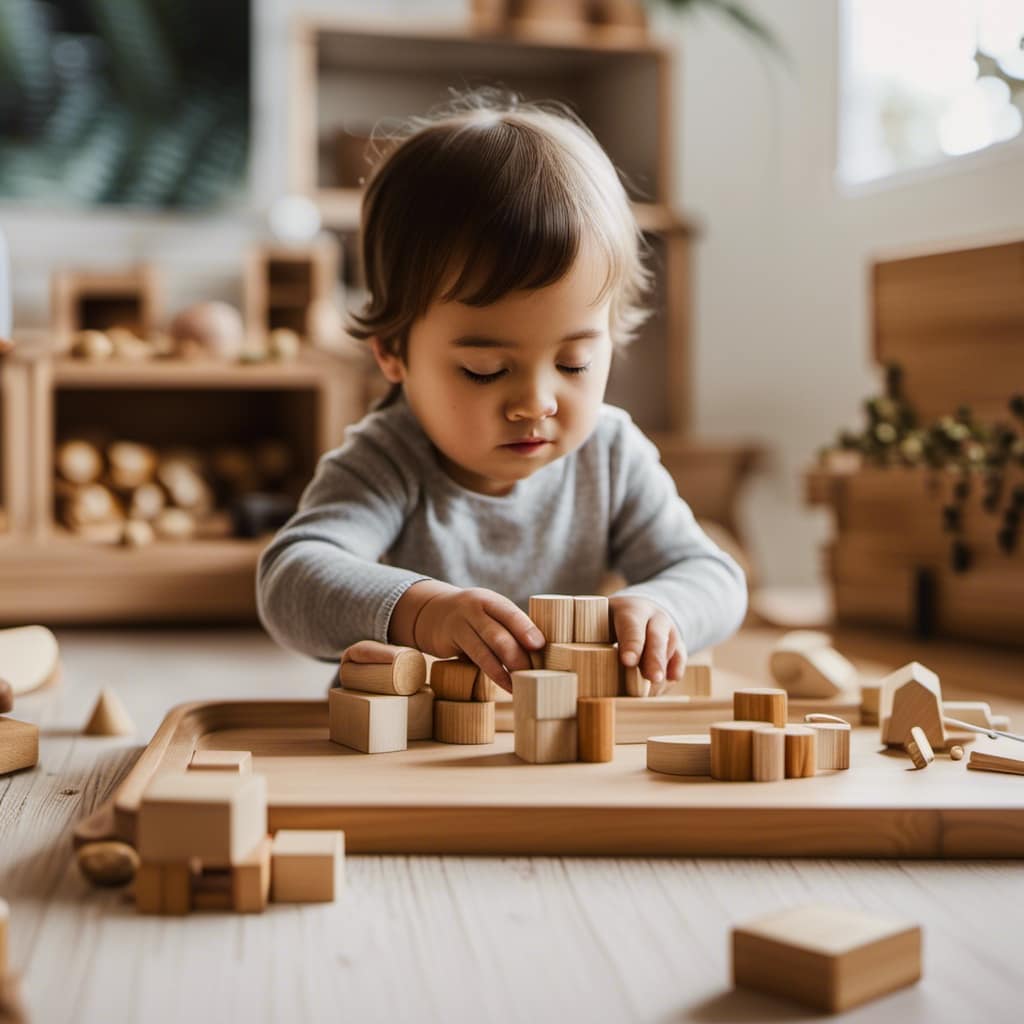
Conclusion
In conclusion, discovering non-toxic wood choices for playtime toys is crucial for the safety of our little ones. By opting for safe wooden materials, we can avoid potential health hazards and create a healthier play environment.
Remember to choose the right wood for Montessori toys and steer clear of toxic options. Ensuring the safety of wooden toys isn’t child’s play, but with a little knowledge and careful consideration, we can make playtime both enjoyable and safe.





